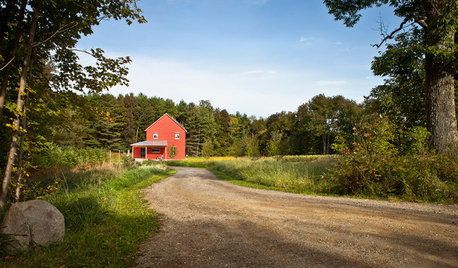The soil price of a systemic pesticide
lpinkmountain
17 years ago
Related Stories

FARM YOUR YARDHow to Get Good Soil for Your Edible Garden
The nutrients in your soil feed the plants that feed you. Here are tips on getting it right — just in time for planting season
Full Story
GARDENING GUIDESGardening Solutions for Heavy Clay Soils
What’s a gardener to do with soil that’s easily compacted and has poor drainage? Find out here
Full Story
GARDENING GUIDESHow to Install a Drip Irrigation System
Save time and water with a drip watering system in your vegetable garden — a little patience now will pay off later
Full Story
HEALTHY HOMEHow to Choose a Home Water Filtering System
Learn which water purification method is best for your house, from pitchers to whole-house setups
Full Story
GREAT HOME PROJECTSHow to Add a Radiant Heat System
Enjoy comfy, consistent temperatures and maybe even energy savings with hydronic heating and cooling
Full Story
GARDENING GUIDESGet on a Composting Kick (Hello, Free Fertilizer!)
Quit shelling out for pricey substitutes that aren’t even as good. Here’s how to give your soil the best while lightening your trash load
Full Story
GARDENING GUIDESNew Ways to Think About All That Mulch in the Garden
Before you go making a mountain out of a mulch hill, learn the facts about what your plants and soil really want
Full Story
PRODUCT PICKSGuest Picks: High-Tech Plant Helpers
Hydroponics, monitoring systems, even an electric pollinator ... these gadgets and services keep your greenery growing strong
Full Story
THE ART OF ARCHITECTUREFinding the Perfect Home for a New House
Sun, soil, water, topography and more offer important cues to siting your house on the land
Full Story
HEALTHY HOMEA Guide to Indoor Air Purifiers
Get the lowdown on air filtration systems for your house and the important ratings to look out for
Full Story






stompede
username_5
Related Professionals
Fillmore Landscape Architects & Landscape Designers · Montgomeryville Landscape Architects & Landscape Designers · Palm Springs Landscape Architects & Landscape Designers · Amesbury Landscape Contractors · Golden Gate Landscape Contractors · Mason Landscape Contractors · New Baltimore Landscape Contractors · New Cassel Landscape Contractors · Riverhead Landscape Contractors · Thonotosassa Landscape Contractors · White Bear Lake Landscape Contractors · Bakersfield Swimming Pool Builders · Grandview Swimming Pool Builders · Redan Swimming Pool Builders · Spring Swimming Pool BuilderslpinkmountainOriginal Author
username_5
stompede
username_5
lpinkmountainOriginal Author
rhizo_1 (North AL) zone 7
lpinkmountainOriginal Author
rhizo_1 (North AL) zone 7
gw:organic-tomatolover
lpinkmountainOriginal Author